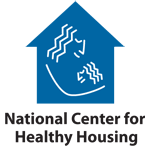|
|
Green Living
We do not strictly control Google ad content. If you believe any Google ad is inappropriate, please email us directly here.
Sort results by: Date Added | Alphabetically - Sierra Club Green Home.com proposes a new industry standard that balances our longtime desire for lots of space with the current and future need to downsize.
- Planning and implementing an energy and space-efficient, eco-friendly bathroom.
- Design details for a more energy-efficient bathroom.
- Lawns can be replaced with gardens producing fresh, healthy food, and are often wasteful and expensive.
- As science progresses, chemical-based cleaning is becoming a part of our past. We are now seeing several chemical free cleaning alternatives becoming available.
- Some ERVs can recover formaldehyde in the same way that they recover water.
- Dust bunnies aren't just unsightly and sometimes allergenic; they contain toxic chemicals.
- How to create a healthy, green environment for your children before and after birth.
- How to conserve water by using graywater for landscaping.
- Interested in taking a deep dip into the home energy waters? Then Home Energy Pros is for you.
- According to the book, The Nature Principle: “The home nature-restoration market is growing. A Canadian company called Nedlaw Living Walls, Inc., produces indoor "living walls" of ficus, hibiscus, orchids and other plants.
- While plywood and other manufactured wood products have long been a source of formaldehyde in our indoor environments, now formaldehyde-free plywood is available.
- It is sad when people decide not to incorporate healthy features into their home project because of cost.
- Choose products made from less flammable natural materials, or made by manufacturers who use safer alternatives.
- Opt for organic fruits and veggies, or use FoodNews.org to find conventionally grown produce with the least pesticides. Choose milk and meat without added growth hormones. Limit canned food and infant formula, as can linings contain bisphenol A (BPA).
- Some plastics contain BPA, which is linked to health issues. Avoid clear, hard plastics marked with a "7" or "PC" and choose baby bottles made from glass. Don't microwave plastic containers. Stay away from toys marked with a "3" or "PVC." Give your baby a frozen washcloth instead of vinyl teethers.
- A University of Melbourne researcher has found that common consumer products, including those marketed as ‘green', 'all-natural', 'non-toxic', and ‘organic’, emit a range of compounds that could harm human health and air quality. But most of these ingredients are not disclosed to the public.
- There are more than 80,000 "chemical substances" in legal use, and, according to the book - Smart Mama's Green Guide by Jennifer Taggart: "less than 10 percent have been reviewed for toxic effects."
- Improving and cleaning your air is an often forgotten task of spring cleaning.
- Most houses and apartments have the potential to negatively affect the health of the people living there.
We do not strictly control Google ad content. If you believe any Google ad is inappropriate, please email us directly here.



Information provided by The Healthy House Institute is designed to support,
not to replace the relationship between patient/physician or other qualified
healthcare provider.
Education Partners
Ads, ad links, products and content on this page are not necessarily endorsed by these organizations.
|

We do not strictly control Google ad content. If you believe any Google ad is inappropriate, please email us directly here.
|








